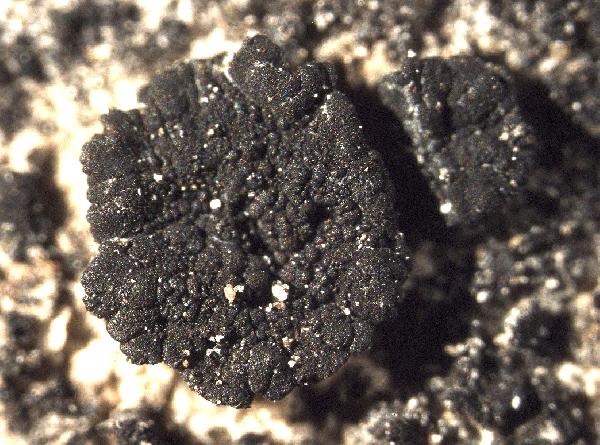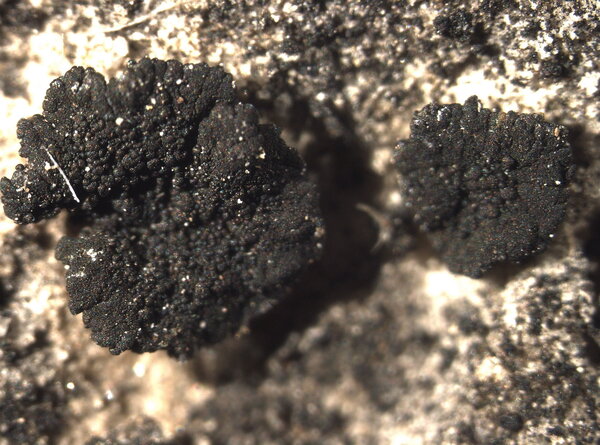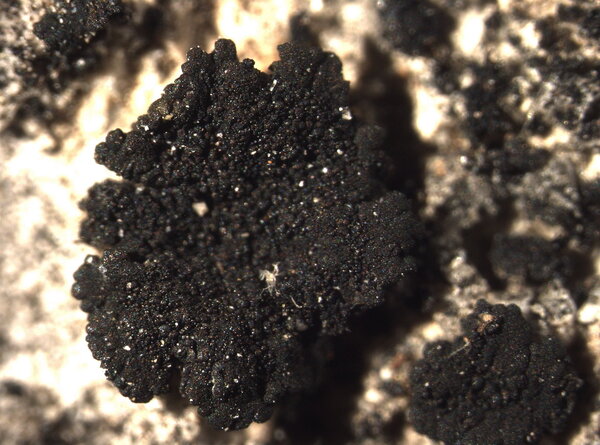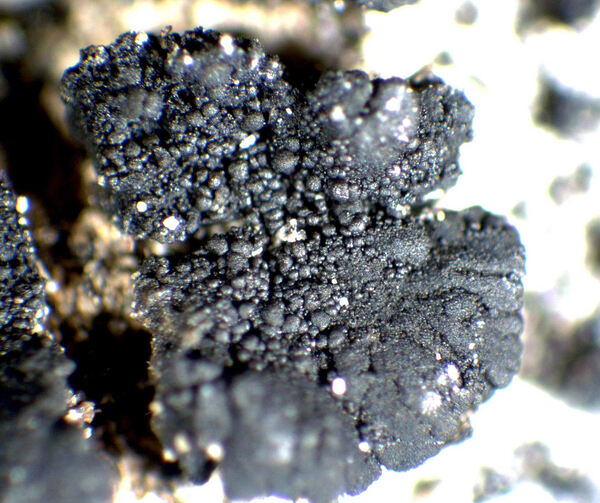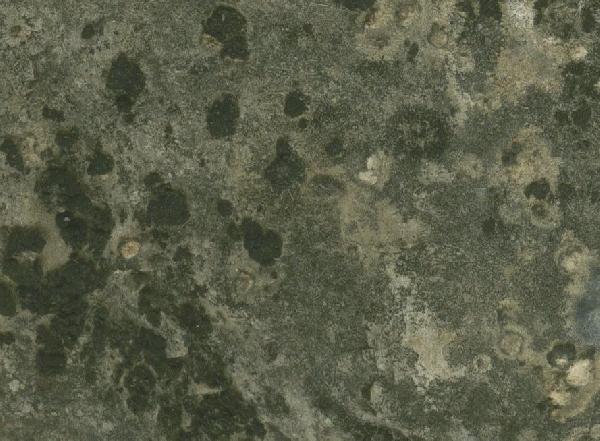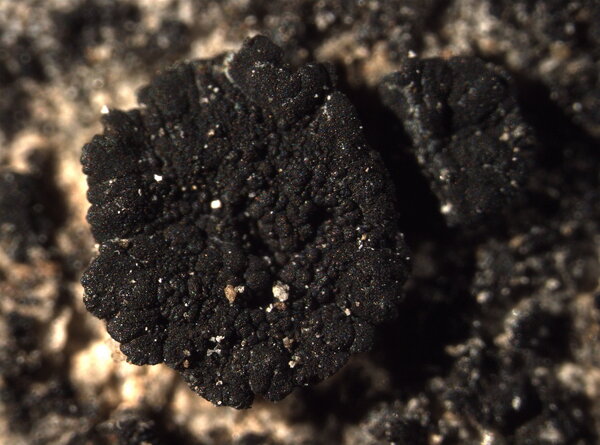Anema moedlingense Zahlbr.
Cat. Lich. Univ., 2: 801, 1902.
Synonyms:
Distribution: N - Frl. C - Abr (TSB 30590), Mol (Caporale & al. 2008).
Description: Thallus squamulose, homoiomerous, slightly gelatinous when wet, in section with a loosely reticulate network of thin hyphae enclosing groups of cyanobacterial cells. Squamules erect, peltate, brown-black to black, rather shiny, dispersed to crowded, up to 3 mm thick, 1-8 mm in diam., often richly and reticulately fissured, epruinose, not isidiate, attached by a holdfast of rhizohyphae, the margin crenulate or weakly lobulate. Apothecia pycnoascocarps, 5-9 per squamule, immersed in the thallus, at first punctiform then expanded and clearly lecanorine, 0.2-1 mm across, with a dark reddish brown, initially urceolate then flat disc, and a thick, smooth thalline margin. Proper exciple poorly developed; epithecium orange-brown, 5-10 µm high; hymenium colourless, 60-100 µm high, the hymenial gel I+ blue; paraphyses stout, to 5 µm thick, simple or sparingly branched, moniliform in upper part; hypothecium yellowish, 30-90 µm high in central part. Asci 8-spored, broadly clavate, thin-walled, with a distinct amyloid outer cap, but no apical dome, Peccania-type. Ascospores 1-celled, hyaline broadly ellipsoid or subglobose, 9-14 x 7-10 µm, the wall 1-2 µm thick. Pycnidia globose, 70-100 µm wide, immersed, unilocular. Conidia ellipsoid or bacilliform, 2-4 x c. 1.5 µm. Photobiont cyanobacterial, chroococcoid, of a few, 7-12 µm wide cells often penetrated by haustoria and surrounded by a gelatinous sheath which is colourless in inner parts, yellowish brown near the thallus surface. Spot tests: all negative. Chemistry: without lichen substances.Note: on steeply inclined, sunny surfaces of calcareous rocks with periodical water seepage after rain. Italian material, congruent with two specimens from STU identified by A. Henssen (Marburg) was identified by Nimis & Tretiach (1999) as A. moedlingense Zahlbr., a variously interpreted taxon (see e.g. Henssen & Jørgensen 1990, Moreno & Egea 1992, Hafellner & Türk 2001), which lacks the characteristic spherical outgrowths of A. tumidulum (see also Zahlbruckner 1898). The suberect, deeply sulcate squamules with a reticulate surface are diagnostic.
Growth form: Crustose
Substrata: rocks
Photobiont: cyanobacteria, coccaceous (e.g. Gloeocapsa)
Reproductive strategy: mainly sexual
On otherwise dry surfaces with short periods of water seepage after rain
Commonnes-rarity: (info)
Alpine belt: absent
Subalpine belt: absent
Oromediterranean belt: absent
Montane belt: rare
Submediterranean belt: rather common
Padanian area: extremely rare
Humid submediterranean belt: rather rare
Humid mediterranean belt: rather rare
Dry mediterranean belt: rather rare

Predictive model
Herbarium samples
Growth form: Crustose
Substrata: rocks
Photobiont: cyanobacteria, coccaceous (e.g. Gloeocapsa)
Reproductive strategy: mainly sexual
On otherwise dry surfaces with short periods of water seepage after rain
Commonnes-rarity: (info)
Alpine belt: absent
Subalpine belt: absent
Oromediterranean belt: absent
Montane belt: rare
Submediterranean belt: rather common
Padanian area: extremely rare
Humid submediterranean belt: rather rare
Humid mediterranean belt: rather rare
Dry mediterranean belt: rather rare

Predictive model
| Herbarium samples |
 DOLICHENS
DOLICHENS
